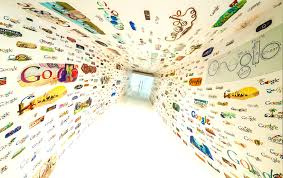Google Doodle AI Mode
Introduction
Google Doodles have long been a way for the tech giant to
celebrate historical events, notable figures, and cultural milestones with
creative illustrations on its homepage. Over the years, these doodles have
evolved from simple static images to interactive games and animations. Now,
with advancements in artificial intelligence (AI), Google has introduced Google
Doodle AI Mode, blending generative AI with artistic expression to create
personalized and dynamic doodles.
What is Google Doodle AI Mode?
Google Doodle AI Mode is an experimental feature that allows
users to generate custom doodles using AI-powered tools. By leveraging machine
learning models like DeepDream, DALL·E, or Google’s own Imagen,
this feature enables users to input text prompts or sketches, which the AI then
transforms into unique, stylized artwork in the form of a Google Doodle.
How Does It Work?
- User
Input – Users can type a description (e.g., "a futuristic
robot celebrating science") or sketch a rough idea.
- AI
Interpretation – Google’s AI processes the input and generates
multiple artistic interpretations.
- Customization –
Users can refine colors, styles, and themes before finalizing their
doodle.
- Sharing
& Integration – The final doodle can be shared on social
media or even submitted to Google for a chance to be featured on the
homepage.
The Technology Behind AI-Generated Doodles
Google Doodle AI Mode relies on generative
adversarial networks (GANs) and diffusion models, which
are trained on vast datasets of artwork, historical doodles, and cultural
motifs. This allows the AI to mimic artistic styles while adding a fresh,
algorithmically generated twist.
Some key AI models that could power this feature include:
- Imagen
(Google’s text-to-image model) – For high-quality, photorealistic
or stylized outputs.
- DeepDream –
For surreal, dream-like artistic transformations.
- DALL·E
(by OpenAI) – For creative and sometimes whimsical
interpretations of text prompts.
Potential
Applications
- Personalized
Celebrations – Users could create doodles for birthdays,
anniversaries, or holidays.
- Educational
Tool – Students could generate doodles based on historical events
or scientific concepts.
- Artist
Collaboration – Google might partner with digital artists to
train AI models on specific art styles.
- Interactive
Competitions – Google could host AI doodle contests where the
best user-generated designs are featured globally.
Ethical
& Creative Considerations
While AI-generated art offers exciting possibilities, it
also raises questions:
- Originality –
Who owns the rights to an AI-generated doodle?
- Bias
in AI – Ensuring the AI avoids stereotypes and represents diverse
cultures fairly.
- Human
vs. Machine Art – Will AI doodles replace human illustrators, or
will they serve as collaborative tools?
Conclusion
Google Doodle AI Mode represents the next step in the
evolution of digital creativity, merging human imagination with machine
learning. By allowing users to co-create with AI, Google is democratizing art
and making doodles more interactive than ever. As the technology improves, we
may see AI-generated doodles becoming a regular feature, celebrating not just
history but also the limitless possibilities of artificial intelligence.









